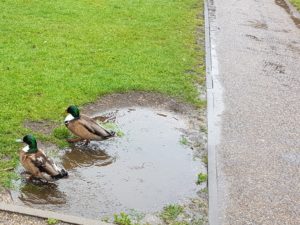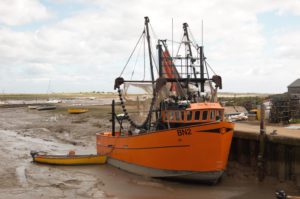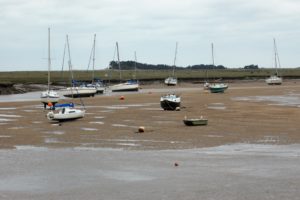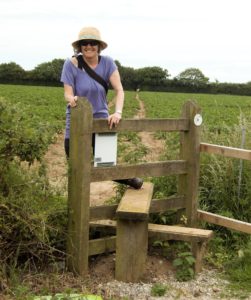We spent our first week in England in the county of Norfolk, which is on the south-east coast, bordering the North Sea. Norfolk is a predominantly rural county, and our reason for coming here was to walk.
At first, the weather wasn’t auspicious for walking. When we stopped for lunch in the town of Ely on our first day, we discovered that local ducks don’t even bother to find a pond during a downpour.

That night it blew so hard that Julian saw a cat that was crossing the road be picked up and deposited on the other side by the wind!
But the weather soon improved and we were able to do two brilliant walks: one along the North Norfolk Coastal Path and the other through the countryside around Trunch.
The Coastal Path runs for about 90 miles between Hunstanton in the west and Sea Palling in the east. We walked only a few small portions, including the 10 miles between Brancaster Staithe and Holme-next-the-Sea.
The word ‘staithe’ is old Scandinavian for a loading dock, which reflects the influence of Scandinavia in this part of the country. Norfolk was invaded successively by the Romans, the Angles (from modern day Denmark), the Saxons (from northern Germany) and finally the Swedes (Vikings), and the local dialect is a mixture of these languages. Brancaster Staithe is a wealthy second-home village filled with lovely Victorian houses and vast expanses of well-manicured lawn that run down to the high tide mark.
We set out at low tide. The sea isn’t even visible at this time of the day, and it’s hard to imagine that these boats will ever float.


The Coastal Path took us along narrow village lanes and beside farmers’ fields.


Holme-next-the-Sea is famous for its miles of sand dunes and its wildlife. We saw swans nesting in the shallows before we reached the dunes where the North Sea was barely visible on the horizon.


Later that afternoon we sat on the outdoor deck of the pub where we were staying and watched the tide come in. Sorry, no photos, but the Pinot Gris was excellent.
Our second walk was a few days later in the area of Trunch, which is a village located about 8 miles south-east of the seaside town of Cromer. Trunch is a rural parish with a population of about 900 people, most of whom work in nearby Norwich.
We saw lots of rose-covered cottages clad in the red brick and sea-worn stones that is distinctive of Norfolk architecture.

We hopped stiles into farmers’ fields and eventually made our way to the coast, where some thoughtful locals had placed a couple of viewing chairs.


Then back to the village of South Repps where Julian fulfilled his fantasy of finishing a long Sunday walk with a cold beer at the pub.




